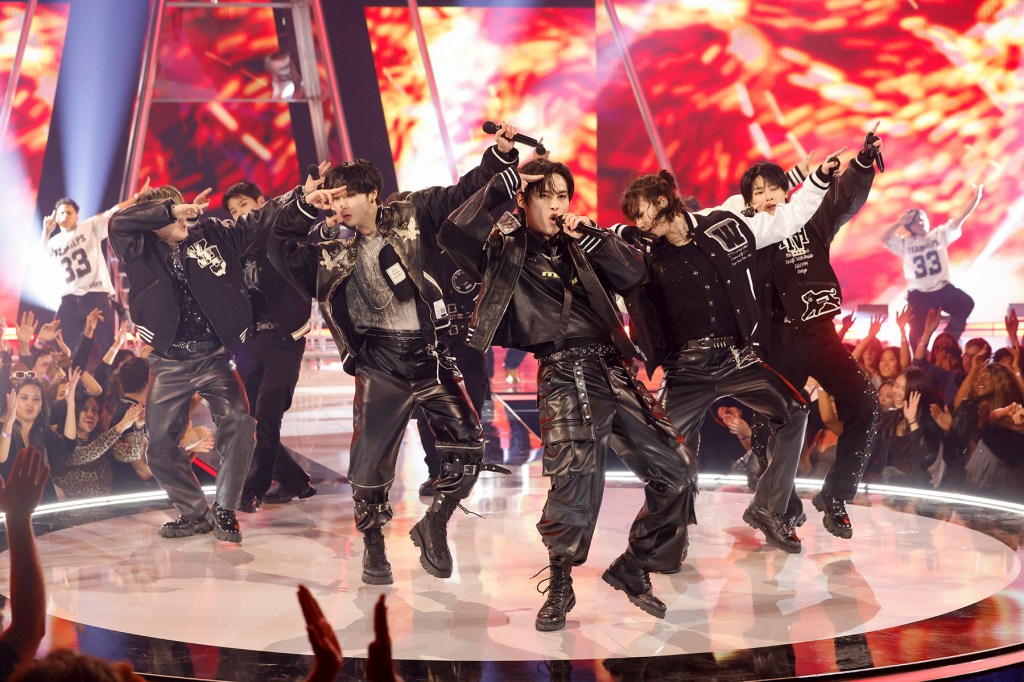- Google warns 2.5 billion Gmail users to change their passwords ConsumerAffairs
- Google warns 2.5B Gmail users to update passwords after hackers complete ‘successful intrusions’ New York Post
- 2.5 Billion users on Risk; A disturbing Truth techi.com
- Google warns billions of Gmail users after a data breach by ShinyHunters The Economic Times
- Over 2B users face phishing risks after Google data leak Fox News
Category: 4. Technology
-
Google warns 2.5 billion Gmail users to change their passwords – ConsumerAffairs
-

Enjoy early bird offers for Luminar major fall upgrade!
In case you missed it, exciting upgrades are on the way for Luminar Neo users. In November 2025, Skylum will be releasing the first phase of the Luminar Ecosystem. This coincides with the availability of Luminar Neo across all major platforms (Android, ChromeOS, and iOS), enabling seamless editing experience and workflow across devices.
Luminar Ecosystem feature highlights
Some of the notable features to look forward to from this upgrade include:
Cross-device mobile-to-desktop editing
Edit photos seamlessly across devices with real-time sync that keeps every adjustment — from sliders to masks — perfectly intact. Start editing on your phone, then continue on your desktop without missing a step.
Thanks to cloud-based infrastructure, your edits are always up to date, no matter where you are. Whether you’re on the go or back at your desk, enjoy a smooth, uninterrupted editing experience that fits your workflow.
Web Galleries
Web Galleries feature lets users instantly turn their edited photos into stunning, personalized web pages. With just a few clicks, a curated gallery can be published online and shared with friends, clients, or fellow creatives — no website or design skills needed.
It’s more than just a way to display images — it’s a way to share emotions, stories, and moments with the people who matter. Whether it’s a passion project, a professional portfolio, or a memory worth reliving, Web Galleries help users connect through the power of visual storytelling.
More coming this year in Luminar Neo
In addition to ecosystem features, Luminar Neo users will receive three powerful upgrades that redefine photo editing:
Restoration
Bring old or damaged photos back to life in a single click. Perfect for reviving family memories or vintage prints with deep scratches or faded color.
AI Assistant
Our new intelligent guide that analyzes photos and recommends optimal edits. Ideal for beginners and pros alike, it makes powerful tools like Develop Raw, Curves, and Color Harmony easier to use than ever.
Volume (Free for all users)
Instantly add depth and dimensionality by enhancing light and shadow. A one-click solution to elevate contrast and visual impact — no manual Dodge & Burn needed.
Early bird offer for Luminar Neo Major Fall Upgrade
To support the Luminar Ecosystem launch, Skylum has a limited time early bird offer with limited license availability for both current and new Luminar Neo users. Be quick, as it’s available until September 1st only!
For new users
- Luminar Neo Cross-device Perpetual license (Luminar Neo + Luminar Mobile) for $139
- Luminar Neo Max Perpetual license (Luminar Neo + Luminar Mobile + Creative library) for $159
For current users
- Ecosystem Pass (Generative tools + New tools + Luminar Mobile + Web Galleries + Cross-device editing mobile to desktop) for $69
- 2025/26 Upgrade Pass (Generative tools + New tools) for $49
Continue Reading
-

TikTok is now letting everyone DM each other with voice memos and pictures
Every platform wants to be the place you hang with friends — even Spotify as of this week — so it’s apparently time for TikTok to shore up its direct messaging feature! It told TechCrunch that over the next few weeks, all users should see voice messages and image sharing options arrive in their DMs.
I checked, and sure enough, I can send both, as well as videos up to one minute long (though that last has been possible for a while). Beware that if you hold down on the microphone button to start a recording, you’ll automatically send that recording as soon as you let go, so be sure to drag it up or left if you want a chance to cancel!
You’re limited to sending up to nine images (and videos) at a time, and both voice memos and videos can’t be more than a minute long.
Continue Reading
-

With new in-house models, Microsoft lays the groundwork for independence from OpenAI
Since it’s hard to predict where this is all going, it’s likely to Microsoft’s longterm advantage to develop its own models.
It’s also possible Microsoft has introduced these models to address use cases or queries that OpenAI isn’t focused on. We’re seeing a gradual shift in the AI landscape toward models that are more specialized for certain tasks, rather than general, all-purpose models that are meant to be all things to all people.
These new models follow that somewhat, as Microsoft AI lead Mustafa Suleyman said in a podcast with The Verge that the goal here is “to create something that works extremely well for the consumer… my focus is on building models that really work for the consumer companion.”
As such, it makes sense that we’re going to see these models rolling out in Copilot, which is Microsoft’s consumer-oriented AI chat bot product. Of MAI-1-preview, the Microsoft AI blog post specifies, “this model is designed to provide powerful capabilities to consumers seeking to benefit from models that specialize in following instructions and providing helpful responses to everyday queries.”
So yes, MAI-1-preview has a target audience in mind, but it’s still a general-purpose model since Copilot is a general-purpose tool.
MAI-Voice-1 is already being used in Microsoft’s Copilot Daily and Podcasts features. There’s also a Copilot Labs interface that you can visit right now to play around with it, giving it prompts or scripts and customizing what kind of voice or delivery you want to hear.
MA1-1-preview is in public testing on LMArena and will be rolled out to “certain text use cases within Copilot over the coming weeks.”
Continue Reading
-
Open Your Eats to This Deal: 23% Off Shokz OpenRun Mini Headphones – PCMag
- Open Your Eats to This Deal: 23% Off Shokz OpenRun Mini Headphones PCMag
- If You Hate How Earbuds Feel, Try Open-Ear Headphones The New York Times
- We are outdoor fitness experts — these are the 6 best bone conduction headphones we recommend Live Science
- I’m a runner, and this deal on the SHOKZ OpenRun Pro 2 is hard to ignore Mashable
- Shokz Bone Conduction Headphones Fall to a New Low, Amazon Clearing Shelves Before Summer Ends Gizmodo
Continue Reading
-

Tecno sets date to bring World’s Slimmest 5G Smartphone to India
Tecno has claimed that it will bring a once-impossible dream “into reality” soon in the form of a smartphone with a particularly on-trend design.
The device will debut in India as the Pova Slim 5G, which seems to be a re-brand of the Spark Slim introduced during MWC 2025.
Should that be the case, it should be just 5.75 millimeters in depth, even though it packs a 5,200mAh battery that is even larger in capacity than that of the much thicker, flagship-grade Galaxy S25 Ultra.
The Pova Slim might also have the same 45W charging as the top-end Samsung device. It could have only 2 rear cameras, although both might have a 50MP resolution and have a more distinctive take on the Google Pixel bar-style hump despite its minimum thickness.
Its AMOLED screen could be a generous 6.78 inches in size, have an advanced 144Hz refresh rate and a 1.5K resolution – although it will also be curved rather than flat, with edges clearly visible next to the ultra-thin frame.
Nevertheless, the Pova Slim might indeed be India’s thinnest 5G smartphone – until the iPhone 17 Air turns up, that is.
The Slim is also set to beat the new iPhones to launch, as it will be unveiled on September 4, 2025.
I became a professional writer and editor shortly after graduation. My degrees are in biomedical sciences; however, they led to some experience in the biotech area, which convinced me of its potential to revolutionize our health, environment and lives in general. This developed into an all-consuming interest in more aspects of tech over time: I can never write enough on the latest electronics, gadgets and innovations. My other interests include imaging, astronomy, and streaming all the things. Oh, and coffee.
Continue Reading
-

Who Had the Best Performances?
With BMG’s release of mid-year results on Thursday (Aug. 28), the dust settles on the monthlong Q2 earnings season, and the curtain raises on Billboard’s awards show-styled recap of the companies who performed best.
While some companies stumbled through economic headwinds and systemic problems, most delivered strong results and proved that demand for music, in its various forms, remains strong while political and economic landscapes seem increasingly uncertain.
Here are the highlights from the latest earnings results. Check here for a complete rundown of all the music companies’ second quarter results.
Best Revenue Growth Rate, All Companies: JYP Entertainment
K-pop company JYP Entertainment posted a 126% increase in revenue in the second quarter. A record-setting world tour by Stray Kids can take some of the credit, but the gain was so large because the prior-year quarter was unusually weak. Revenue of 215.8 billion KRW was a record high, and the prior year quarter’s revenue of 98.7 billion KRW was the lowest in nearly three years. Runners up: fellow K-pop company SM Entertainment was up 19.3%, Tencent Music Entertainment was up 18% and Live Nation was up 16%. Fellow K-pop companies YG Entertainment and HYBE were up 11.6% and 10.2%, respectively.
Highest Revenue Growth Rate, Digital Service Providers: Tencent Music Entertainment
Despite years of ongoing chatter about superfan music subscription tiers, which upcharge consumers for additional features and perks not available at the basic subscription level, only Tencent Music Entertainment has gone to market with one. TME’s Super VIP subscription plan, which now has over 15 million subscribers, helped the Chinese music streamer’s revenue rise 17% from the prior-year period. (Spotify’s premium revenue was up 12%.) The number of subscribers rose 6.3%, meaning much of the incremental subscription revenue came from the high-priced premium tier. The total number of TME subscribers now sits at 124.4 million, second only to Spotify’s 276 million.
Best Margin Growth: Tencent Music Entertainment and BMG
Music businesses have undergone significant transformations in recent years, cutting costs through layoffs and hiring people with the skills necessary for today’s streaming-dominated, social media-heavy landscape. Leaner operations have led to improved margins; price hikes by Spotify and other streaming services have helped many companies, too. But the pace of layoffs has calmed, and price increases are more sparsely seen than in years past.
Still, a couple companies had standout margin improvement in the last quarter. In the first half of the year, BMG’s EBITDA margin rose to 29% from 26.5% in the prior-year period. (The company does not reveal its gross margin percentage and reports half-year, not quarterly, results.) Tencent Music Entertainment also had a 3.5 percentage point improvement in its gross margin in Q2 — 44.4% versus 40.9% in Q2 2024. Honorable mention goes to Spotify’s gross margin percentage, which rose over two percentage points to 31.5% from 29.2% a year earlier. That was slightly lower than the 31.6% achieved in the first quarter, however, and well below Q4’s 32.2%.
Best Comeback: iHeartMedia
The radio business has been a tough slog in recent years. Companies have worked feverishly to build digital businesses to offset their eroding broadcast advertising revenues. It hasn’t always worked out. In the second quarter, Cumulus Media posted a 9.2% drop in revenue. But iHeartMedia had some bounce in its step. Last quarter, iHeartMedia revenues rose 0.5% to $934 million, beating guidance, while adjusted EBITDA rose 3.9% to $156 million. Investors rewarded iHeartMedia by sending the stock up 24.5% the day earnings were announced. That brought the year-to-date gain to 11.3%, a nifty turnaround for a company whose share price has been in a serious funk for three years. Another radio company, Townsquare Media, gets a nod for meeting its Q2 revenue guidance and exceeding its adjusted EBITDA guidance.
Best Explanation of AI’s Impact: Spotify
Even though companies don’t quantify the exact financial impacts of artificial intelligence, they occasionally use earnings calls to explain the benefits. During Spotify’s Q2 earnings, co-president and chief product officer Gustav Söderström explained to analysts and investors the ways generative AI is helping the company work more effectively and gain insights into users’ experiences. In product development, Spotify uses AI to develop and test prototypes faster. In the user experience, Spotify uses the words spoken by users to effectively create a new data set that’s shaper than “blunt signals” such as song skips, which don’t tell Spotify about the situation — does the person hate the song, or are they tired of a song they like, or was it simply the wrong situation for a beloved song?
“We’re getting a new data set now,” he said, “which is what English sentence goes to this song, and that’s completely new to us, and it’s a very, very valuable data set that we are collecting very quickly.” AI also helps Spotify make better recommendations, which helps keep people listening longer. “User engagement is a critical metric for us, and as we rebuild our stack for the generative AI age and bring personalization to a whole new level, we’re seeing [user engagement] improve significantly,” said Söderström.

Continue Reading
-

The Best Legion 7 RTX 5090 Gaming PC Deal During the Lenovo Labor Day Sale
The Lenovo Labor Day Sale is offering a great deal on Lenovo’s best gaming desktop computer. Right now you can get a Lenovo Legion Tower 7i Gen 10 gaming PC equipped with an Intel Core Ultra 9 285K processor and RTX 5090 graphics card for $4,189.49 after two stackable coupon codes “EXTRAFIVE” and “LENOVOLIVE10“. This beats out the previous lowest price I had seen by about $400. This configuration is only sold at Lenovo direct and you won’t be able to find it at traditional retailer sites like Amazon, Newegg, or Best Buy. If you order it now, you should receive it by early September.
Lenovo Legion Tower 7i Gen 10 RTX 5090 Gaming PC for $4,189
Lenovo Legion Tower 7i Gen 10 Intel Core Ultra 9 285K RTX 5090 Gaming PC (64GB/2TB)
0
The Legion Tower 7 is Lenovo’s top-end desktop computer, boasting a well-ventilated chassis with a mesh front panel housing six total 120mm fans (including three fans for the 360mm liquid cooling system) to keep your components nice and cool. The system is powered by a generously oversized 1,200W power supply.
This particular configuration features an Intel Core Ultra 9 285K processor, GeForce RTX 5090 32GB graphics card, a whopping 64GB of DDR5-5600MHz of RAM, and a 2TB PCIe Gen 4 M.2 SSD. The Intel Core Ultra 9 285K processor has a max turbo frequency of 5.7GHz with 24 cores and a 40MB L2 cache. According to Passmark, this is Intel’s best gaming CPU and really the Intel chip that can compete with AMD’s X3D processors. It’s paired with 64GB of DDR5 memory.
The RTX 5090 Is the Most Powerful Graphics Card Ever
The Nvidia GeForce RTX 5090 has emerged as the most powerful consumer GPU on the market. Although Nvidia has prioritized software updates, AI features, and DLSS 4 technology to improve gameplay performance, the 5090 still boasts an impressive 25%-30% uplift over the RTX 4090 in terms of pure hardware-based raster performance. The 5090 also has more (32GB vs. 24GB) and faster (GDDR7 vs. GDDR6) VRAM compared to the 4090.
Why Choose Lenovo?
Lenovo Legion gaming PCs and laptops generally feature better build quality than what you’d find from other prebuilt PCs. For desktop PCs in particular, people like the fact that Lenovo does not use proprietary components in its computer systems, so they’re easier to upgrade with off-the-shelf parts. Although we haven’t yet reviewed the new 2025 models, we have reviewed last year’s Legion 7 desktop and really liked its build quality and performance.
Eric Song is the IGN commerce manager in charge of finding the best gaming and tech deals every day. When Eric isn’t hunting for deals for other people at work, he’s hunting for deals for himself during his free time.
Continue Reading
-

Microsoft’s next annual update for Windows 11 is in Release Preview testing
So, will you see new UI features or more AI tweaks included on your desktop with this update? Microsoft didn’t mention many specific features or changes in the update, other than confirming it shares the same new features and enhancements as the previous version, 24H2, which flips on new features throughout the year, along with some notes for IT:
Windows 11, version 25H2 also includes some feature removals such as PowerShell 2.0 and Windows Management Instrumentation command-line (WMIC). And for our commercial customers, Windows 11, version 25H2 includes the ability for IT admins to remove select pre-installed Microsoft Store apps via Group Policy/MDM CSP on Enterprise/EDU devices.
As Microsoft detailed in June, using its shared servicing branch means updating from the current 24H2 version to 25H2 takes a single restart, as new features are added in earlier updates but left disabled until the enablement package activates them.
To get the update, you can join the Release Preview channel and get Windows 11, version 25H2 (Build 26200.5074) now by going to the Windows Update section of settings and choosing to install it.
Continue Reading
-

Male and female bovine embryos show distinct development paths
Cornell researchers have uncovered the genetic triggers that cause male and female bovine embryos to develop differently, as early as seven to eight days after fertilization. The breakthrough in basic science has implications for human health – such as drug development and in vitro fertilization – and for bovine health and dairy industry sustainability.
Scientists have known since the 1990s that male embryos of multiple mammalian species, including humans, grow faster than female embryos, but until now, the underlying reasons were unclear.
In a new paper, published Aug. 27 in Cell & Bioscience, Cornell scientists grew bovine embryos in petri dishes then analyzed their genetic sex and RNA sequencing, which shows how genes are being expressed. They discovered significant sex differences in gene regulation: Male embryos prioritized genes associated with energy metabolism, causing them to grow faster than their female counterparts. Female embryos emphasized genes associated with sex differentiation, gonad development and inflammatory pathways that are important for future development.
Understanding these fundamental sex differences at the genomic and molecular levels is critically important to improving in vitro fertilization (IVF) success in humans and cows, and in developing treatments that will work for both men and women, said Jingyue “Ellie” Duan, assistant professor of functional genomics in the College of Agriculture and Life Sciences and paper co-author. Co-first authors are Meihong Shi, a postdoctoral associate, and Guangsheng Li, a Ph.D. candidate, both in Duan’s lab.
“Sex difference has been a factor ignored in a lot of studies and clinical trials. Until very recently, most mouse studies have used exclusively male mice. And most drug discovery is done with male mice,” Duan said. “And yet, we see that onset and occurrence of many diseases are different in men and women: Alzheimer’s, autoimmune diseases, heart disease. In this basic study, we found that male and female embryos are different, even at this very early stage, on the basis of genome regulation.”
At this early stage, sex-associated hormones like estrogen and testosterone – which contribute to average size differences between male and female adults – have not yet come into play. Advances in genome sequencing technology enabled researchers to revisit the question at a genome-wide level, Duan said.
“This could imply that there’s an intrinsic factor in our genome contributing to the sex-based differences we see, such as sex chromosomes (XX versus XY) or sex-linked genes, not just from hormonal change or environmental factors,” Duan said. “We’re born with this sex-specific genetic regulation that is contributing very differently to cellular behavior, disease onset and immune system development, and continues through life all the way to health and aging. That’s a very important message for people in the clinical field and people developing drugs to understand.”
Bovines are an effective animal model for human-health studies, but bovine research is also important for its role in supporting food supplies and sustainable agriculture. Understanding and optimizing bovine reproduction is especially important for the dairy industry, which relies on cattle reproduction through IVF to maintain milk supplies.
Duan’s lab collaborated in this research with the lab of Soon Hon Cheong, Ph.D. ’12, associate professor of clinical sciences in the College of Veterinary Medicine. The project would not have been possible without collaboration between Duan’s genomics-focused lab and Cheong’s group, which studies reproductive medicine and assisted reproductive techniques, Duan said.
Future research, already underway in both labs, will expand this work by studying sex differences in embryos from fertilization through day eight after fertilization.
The research was supported by the National Science Foundation and the Cornell Center for Vertebrate Genomics.
Source:
Journal reference:
Shi, M., et al. (2025). Sex-biased transcriptome in in vitro produced bovine early embryos. Cell & Bioscience. doi.org/10.1186/s13578-025-01459-x
Continue Reading

